|
 Secure Site
Secure Site
|
 |
Archive for the 'Chime Alarm Clocks' Category
 The Practice of Mediation- Communing with Divinity The Practice of Meditation: Using the Chime Clock to End Your Meditation
In the practice of meditation, there are many forms and theories of meditation, two basic approaches emerge. These two basic types of meditation can be characterized as “meditation with form” and “meditation without form.” In meditation with form, the practitioner focuses on contacting his or her Higher Self, or communing with Divinity. Meditation with form can also involve creative imagery and visualization. Meditation without form concerns going beyond thought into emptiness––transcending the ego-self.
But no matter which type of meditation you choose to practice, meditation is more than simply entering into a dream-like or alpha state. In the practice of meditation you will inevitably progress through a series of developmental stages as you become more adept at journeying deeper within yourself.
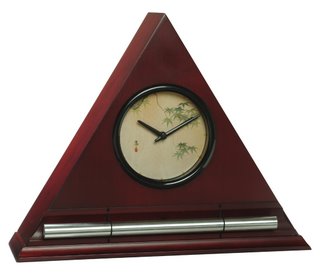 The Practice of Mediation- Japanese Leaves Dial Face in Burgundy Finish by Now & Zen The first and most basic use of the Zen Alarm Clock (a chime clock) in your meditation practice is as a signal of the end of your allotted meditation time. If you want to meditate for 20 minutes, simply set the alarm 20 minutes into the future and begin your meditation. When the first chime strikes you can choose to end there or continue your meditation for about three and a half minutes until the next chime, or even longer. Many meditators find that a “three and a half minute warning” is a perfect interval in which to gradually conclude their longer meditations. The first chime signals the final phase of the meditation and the second chime its conclusion.
 The Practice of Mediation- Stillness The beauty of the chime is that it compliments rather than disturbs the meditative state while acting as an effective timer. No matter how you use it, the sonic clarity of the chime provides an appropriate conclusion to your stillness.
Please visit us in Boulder, CO:
Now & Zen Headquarter Store
1638 Pearl Street
Boulder, CO 80302
(800) 779-6383 or (303) 530-9028
Posted in Chime Alarm Clocks, Meditation Timers, Meditation Tools, Now & Zen Alarm Clocks, Truth, Zen Timers
 Morning meditation Sense the Stillness in the Morning
For yoga instructor Alison Novie, mornings make an ideal time for meditation — perhaps more than any other time of day. “The sun’s about to rise, but it’s still sort of dark and quiet,” says Novie, who wakes at 5:00 a.m. to meditate. “I get up, brush my teeth, light a candle, and then sit for half an hour. The calm energy I get from that morning meditation carries me through the day.”
You don’t have to be a regular yoga or meditation practitioner to reap the benefits of a morning meditation ritual. Start with five minutes daily, using the guidelines that follow. Set you Meditation Timer from Now & Zen for 5 minutes. Then over the course of a few weeks — or when you are ready — gradually work up to 10 minutes. Remember, with meditation it’s quality, not quantity, that matters.
Start with awareness. Rather than lunge out of bed, Novie suggests waking up slowly. “Spend a few minutes just becoming conscious of the sensations of your body. Awareness is such a beautiful way of entering your day.” Once you’re up, resist the temptation to check your e-mail, flip on the radio, or do any of the other countless things that draw you out of yourself and into the concerns of the world. Instead, keep the focus inward.
Find a comfortable spot. Practice your five minutes of meditation anywhere you like (the bedroom floor, a favorite chair) except the bed, where you may fall back to sleep. To enhance the sacred aspect of her meditation space, Novie set up a small altar in her living room that she uses only for meditation, giving the space a positive energy of its own. Be sure to set your Meditation Timer from Now & Zen for 5 minutes.
Sense your breath. Close your eyes. Feel your breath moving in and out of your body without controlling it. Bring your attention to the rise and fall of your abdomen or to the tip of your nose. The more awareness you bring to breath and body, the more grounded in your body you’ll become. This, in turn, will help relieve some of the stress that comes with getting through your morning.
Don’t try to block your thoughts. Your mind will wander — that’s what it’s designed to do. Rather than try to fight off thoughts as they emerge, acknowledge them, but don’t engage them. And give yourself some slack — meditation is, after all, a practice, not perfection.
Our Zen Timepiece’s acoustic 6-inch brass bowl-gong clock is the world’s ultimate alarm clock, practice timer, and “mindfulness bell.”
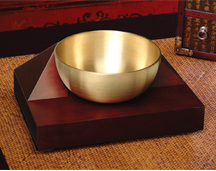 Meditation Gong Timer with Singing Bowl It fills your environment with beautifully complex tones whenever it strikes. In the morning, its exquisite sounds summon your consciousness into awakening with a series of subtle gongs that provide an elegant beginning to your day. Once you experience the Zen Timepiece’s progressive awakening, you’ll never want to wake up any other way. It also serves as the perfect meditation timer.
adapted from Body + Soul, March 2006
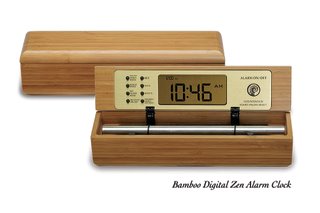
Now & Zen’s Clock Shop
1638 Pearl Street
Boulder, CO 80302
(800) 779-6383
Posted in Bamboo Chime Clocks, Chime Alarm Clocks, intention, Natural Awakening, Now & Zen Alarm Clocks, sleep, Sleep Habits
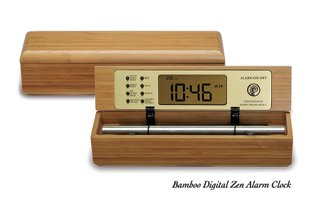 gentle awakening clock with acoustic chime Boulder, Colorado—an innovative company has taken one of life’s most unpleasant experiences (being startled awake by your alarm clock early Monday morning), and transformed it into something to actually look forward to. “The Zen Alarm Clock,” uses soothing acoustic chimes that awaken users gently and gradually, making waking up a real pleasure.
What makes this gentle awakening experience so exquisite is the sound of the natural acoustic chime, which has been tuned to produce the same tones as the tuning forks used by musical therapists. According to the product’s inventor, Steve McIntosh, “once you experience this way of being gradually awakened with beautiful acoustic tones, no other alarm clock will ever do.”
 sleeping woman using gentle awakening alarm clock Now & Zen – A Gradual
Alarm Clock Store
1638 Pearl Street
Boulder, CO 80302
(800) 779-6383
Posted in Bamboo Chime Clocks, Chime Alarm Clocks, Zen Alarm Clock
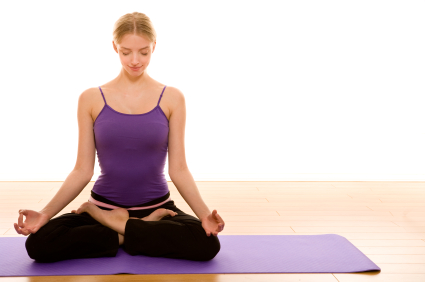 stillness practice using breath Meditation is easy in theory but fiendishly difficult in practice—unless you can give your mind a vehicle for moving inward.
By Rolf Sovik
Once your meditation posture feels relaxed and comfortable, try these five simple steps:
1. Become aware of your breathing. Feel the sensations of cleansing and nourishing that accompany each breath.
2. Relax your abdomen and rib cage so that your breathing flows effortlessly.
3. Weave each breath smoothly into the next, letting the breath flow without jerks or pauses.
4. Continue observing your breathing until you feel your nervous system relax. Maintain the smooth flow of breathing even when distractions disturb your mind.
5. Try working with the mantra soham (pronounced “so-hum”). Link the sound so… to your inhalation and the sound hum… to your exhalation. Let the breath and mantra flow together in perfect harmony, until your mind rests in the sound of the mantra.
Now your meditation will unfold in the mantra sound (so…hum…). Bringing so…hum… to awareness provides the mind with a quiet resting place during meditation. Maintaining just a sliver of awareness on the breath, along with the mantra, will help your meditation unfold.
 Meditation Timers and Alarm Clocks with Acoustic Sounds, Boulder, CO Now & Zen
1638 Pearl St.
Boulder, CO 80302
(800) 779-6383
Posted in Chime Alarm Clocks, Meditation Timers, Meditation Tools, mindfulness practice, Now & Zen Alarm Clocks
 Painting of Morpheus, Phantasos and Iris by baron Guérin - Morpheus God of Dreams & Sleep So much has been written about sleep, you’d think we’d all be wrapped in the arms of the slumber god Morpheus by now, dreaming sweet dreams and waking up refreshed. But for too many Americans a sound sleep remains, well, a dream. Instead they spend their nights tossing and turning and their days walking around bleary-eyed and exhausted.
You won’t sleep well if you don’t feel comfortable in your surroundings. This is why you should devote time to preparing the best possible sleep environment. Feng shui, the ancient Chinese art of placement and design, promotes bedrooms that are clutter-free and decorated with colors that engender feelings of serenity.
First, create a boundary around your bedroom, says feng shui expert Terah Kathryn Collins, author of The Western Guide to Feng Shui: Room by Room (Hay House, 1999). “The bedroom should be reserved for two things: sleep and romance,” she explains. Next, eliminate anything that increases activity or stimulates the mind such as TVs, computers and exercise equipment. “If you see your computer, you’ll think of emails you haven’t returned. Your treadmill will remind you that you need to work out more,” Collins says. If you must have a TV in the bedroom, place it in a cabinet with doors, so it can be out of sight when not in use. Hide any other must-haves behind an attractive, free-standing screen.
 Feng Shui, bed placement promotes relaxation Also, place your bed so you can see the door. “If the door is hidden from view, that increases anxiety,” Collins says. It also shouldn’t be directly in front of the door, but rather off to one side so that you don’t have the sense you can be easily intruded upon. The direction the bed points is also important. Collins says insomniacs should face the headboard west, which promotes relaxation and helps them to sleep past dawn. If your insomnia is depression-related, however, she suggests facing the headboard toward the east, which “speeds people up.” Sleeping with your head pointing north maintains overall balance, while south promotes intuition and dream recall.
 Ohara Koson (Shoson) 1877-1945 two carp and white lotus 1933 Colors can also affect your slumber. It’s best not to have gray, blue or pure white as the dominant color, Collins says, for the simple reason that “cool colors such as these don’t complement or ‘match’ your skin.” The problem? “Though they can be dramatic, they don’t make most people feel truly comfortable and relaxed.” Try this experiment: Find a pure white sheet and one in a skin-tone color such as beige, and hold them up to your face in front of a mirror. “Most people will notice that the skin-tone is more attractive against their skin, while the cool contrast of the white can make them look washed out and sallow,” Collins says. So choose pastel colors reminiscent of skin tones and/or the deep rich hues that come from skin tones, such as beige, chocolate brown, peach and terracotta.
Finally, make your bedroom a clutter-free zone. Remove piles of clothes and reduce that bedside stack of magazines and books to just one of each. “The more stimuli you can eliminate, the better,” she says. Collins adds that while mirrors can make rooms feel bigger and brighter, they also can be a distraction at night because reflections can be quite activating. Her suggestion: Place curtains over mirrored closet doors so they can be “closed” at night and opened during the day.
One of the ultimate Zen like experiences is waking-up from a great slumber refreshed and energized. Your mind and body are harmoniously one, both alert and focused. Having a refreshed mind and body are two keys to a natural and Zen lifestyle. Waking up in the morning should not be a loud and abrupt awakening, but rather it should be a peaceful positive experience. The right natural alarm clock can transition your deep and tranquil sleep into a serene start to consciousness. Imagine a long-resonating Tibetan bell-like chime waking you up to a beautiful morning experience.
The right alarm clock can be the most beneficial investment for you. With our Now & Zen natural alarm clock you are awakened more gradually and thus more naturally. Now & Zen is focused on creating a naturalistic lifestyle, and our clocks are an example of our philosophy.
adapted from Natural Solutions, December 2005 by Matthew Solan
 Zen Chime Alarm Clock, Digital Black Lacquer Chime Clock, clocks to make your bedroom a 'clutter-free' zone Now & Zen – The Gradual Chime Alarm Clock Store
1638 Pearl Street
Boulder, CO 80302
(800) 779-6383
Posted in Bamboo Chime Clocks, Chime Alarm Clocks, Japanese Inspired Zen Clocks, Natural Awakening, Now & Zen Alarm Clocks, Progressive Awakening, Sleep Habits
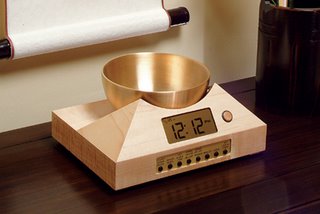 Sweetest Sounding Alarm Clocks with Persistent Singing Bowl Chime Chime Zen Alarm Clocks with Tibetan-Singing Bowl deliver the Sweetest, Most Persistent Sounds that are Unique and Acoustic
What makes this gentle awakening experience so exquisite is the sound of the natural acoustic chime, which has been tuned to produce the same tones as the tuning forks used by musical therapists. According to the product’s inventor, Steve McIntosh, “once you experience this way of being gradually awakened with beautiful acoustic tones, no other alarm clock will ever do.”
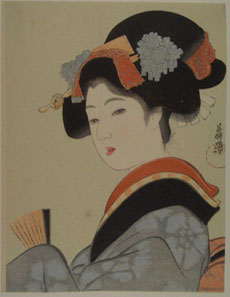 Elegant Women. Courtesy of the Japan Ukiyo-e Museum Now & Zen – The
Gradual Chime Alarm
Clock Store
1638 Pearl Street
Boulder, CO 80302
(800) 779-6383
Posted in Chime Alarm Clocks, Natural Awakening, nature, Now & Zen Alarm Clocks, wake up alarm clock
 Chartres Cathedral, France
Eastern and Western Meditation Traditions: Both Cultures Use Bells and Chimes
Bells and chimes are used in both Eastern and Western meditation traditions. In the Christian monastic tradition, the ringing of the bell during meditation reminds the practitioners to return to the object of worship.
 Zen Monks
Similarly, Zen monks have used gongs and “mindfulness chimes” to begin their meditations and during meditation to bring them out of their mental processes back to the stillpoint of tranquility.
The use of metal alloy bowls for devotional purposes can be traced back to the beginnings of metallurgy in China prior to 1,000 B.C. The bowl that comes with our Zen Timepiece is modeled after a Japanese “rin gong,” or Keisu, that is periodically struck with a stick to punctuate sutra-reading in Buddhist temples.
The Himalayan peoples have been using metal bowls in their rituals and as offerings to Deities since at least 560 B.C. These hand-hammered Himalayan alloy bowls have come to be known as “Tibetan Singing Bowls” because of the unique way they are sounded by rubbing a mallet over the rim so as to produce harmonic resonances and overtones. Although the bowl that comes with our Zen Timepiece is not technically a Tibetan Singing Bowl, it will produce harmonic effects if a mallet or striking stick is rubbed around its edge in a circular motion.
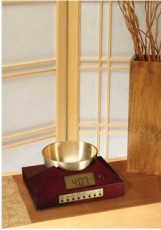 Bowl-gong Clock has a long-resonating chime sound The bowl that comes with the Zen Timepiece is made from the following five metals: copper, zinc, lead, iron, and tin. It has been formed using the same forging techniques that have been used in Asia for two thousand years. Unlike hand-hammered Himalayan-style bowls, our Zen Timepiece’s rin gong bowl is made using methods which first appeared in Japan in the first century. Following these traditions, our bowl’s long-resonating tone has been carefully selected to bring beauty and harmony to your environment.
Now & Zen – The Gradual Alarm Clock Store
1638 Pearl Street
Boulder, CO 80302
(800) 779-6383
Posted in Chime Alarm Clocks, Japanese Inspired Zen Clocks, Meditation Timers, Meditation Tools, Now & Zen Alarm Clocks, Truth, zen monks, Zen Timepiece by Now & Zen, Zen Timers
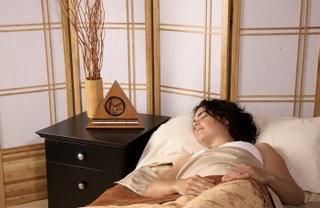 Turn your home into a sanctuary By Sherri Silverman
In dreams, homes are often symbols of our physical bodies. In Vastu, the “yoga of design,” the structure of our homes is representative of our own bodies: what goes on in one affects the other, and our own little universes of body and home embody the same forces that compose the vast universe. In fact, Mayan (according to legend, the originator of Vastu knowledge some 10,000 to 14,000 years ago) is said to have coined the aphorisms “As in macro, so in micro,” and “As above, so below.”
Vastu is a scientific and spiritually based system of design for all kinds of buildings: temples, businesses, homes. It creates dwellings in which prana (subtle, universal life-force energy: what Chinese systems of feng shui and Oriental medicine call ch’i) flows freely and there are no structural elements that predispose us to illness or problems in life. Buildings constructed according to true Vastu are conducive to good health. The principles of Vastu can also be applied to rectify energy imbalances in existing homes and create the peace and stability we need to have success on all levels, spiritual and material.
Knowledge of Vastu traveled from India along the Silk Road and on sea routes with merchants and monks. It influenced native East and Southeast Asian traditions, as did other fields of knowledge from India: Hinduism, Buddhism, Jyotish (Vedic astrology), and Ayurveda. There are even legends that Buddha himself traveled to East and Southeast Asia and could have brought India’s great knowledge systems with him. Emperor Ashoka, a famous convert to Buddhism, sent specialists in India’s traditions to Southeast and East Asia to meet local practitioners, find their indigenous traditions, and offer knowledge. These probably brief seminars brought valuable information that melded with the local customs.
Like meditation and yoga, Vastu is universal and useful for people everywhere. It is not a style of architecture or interior design; it is a complete system based on natural laws that can work with your own sense of style and beauty. You can have a Tudor Vastu home or a New Mexico Territorial Vastu home, Spanish Mission–style Vastu architecture, or log cabin Vastu architecture. Likewise, you are not restricted to a particular style of interior design: lots of frills and lace or a stark, Zen-inspired interior can both work within the Vastu framework. Almost all of your individual preferences in color, style, materials, texture, and furnishings can work in a Vastu home or office. As long as it follows the guidelines, is beautiful, and is well constructed with natural materials, any architectural style or design scheme can work with Vastu.
Meditation connects us with the source of pure consciousness; Vastu enhances this effect and connects us with the source through proper design. As a result, it is particularly relevant to people who practice meditation and yoga. Anyone, however, can benefit from applying some Vastu to their home. Here are a few guidelines that will help you turn your home into a yogic sanctuary.
The Five Elements: Panchabhutas
The principles of Vastu connect the dweller of the Vastu home with the subtle laws of nature, such as the energy grid of the earth, beneficial earth energies, and cosmic energies from the sun. They also align the home with the five elements of earth, water, fire, air, and space, which are called panchabhutas in the Vedic tradition. Each of these five basic elements is energetically associated with a particular direction. This is not an arbitrary assignment but an acknowledgement of the subtle laws of nature. By honoring the various elements and their primal energies, we are in greater harmony with nature. This results in greater harmony and ease in our lives.
Earth: bhumi or prithivi
The earth element is associated with the southwest direction, the best choice for the location for the master bedroom. Earth is a solid, dense, and grounded element. We all need a physical basis or foundation to survive in this world. Plants, trees, soil, rocks, and mountains represent the earth element.
Water: jala
Northeast is the direction where the energy waves of the water element collect. This makes it the best placement for indoor and outdoor water features: swimming pools, fountains, ponds, waterfalls, and aquariums. Water is frequently used as a metaphor for pure consciousness in the Vedic tradition.
Fire: agni
The fire element is predominant in the southeast, so it is the best placement for kitchens, fireplaces, computers, and other electrical equipment. Digestion in the body and transformation are also the realm of agni. To add and honor this element, light fires. Enjoy an indoor or outdoor fireplace in the southeast, and light non-toxic candles made of beeswax.
Air: vayu
The air element is liveliest in the northwest, so put fans, wind streamers, mobiles, wind chimes, and air purifiers here. The concept of movement in general is associated with this element and its direction. To reap the benefits of the prana in the air, learn and practice pranayama (yogic breathing techniques), preferably with windows open enough to bring fresh air into the room. Be sure that the air in your home is fresh. If your home has stagnant areas, you can use fans to keep the air moving.
Space: akasha
This element is directly linked to sound and silence. Akasha (sometimes called “ether”) is the expansiveness in the center of the architectural form and in the center of each room, the element of “energetic and dynamic space.” The center of the building and each room is called the Brahmasthan. It is the interface between the seen and the unseen, the manifest and the unmanifest. Honor the Brahmasthanby keeping it clean and clear, a revered open space. Don’t put heavy objects here.
Vastu expert Sherri Silverman, PhD, is the founder of Transcendence Design. This article is adapted fromVastu: Transcenden-tal Home Design in Harmony with Nature by Sherri Silverman. © 2007 by Sherri Silverman. Reprinted with permission of Gibbs Smith.
One of the ultimate Zen like experiences is waking-up from a great slumber refreshed and energized. Your mind and body are harmoniously one, both alert and focused. Having a refreshed mind and body are two keys to a natural and Zen lifestyle. Waking up in the morning should not be a loud and abrupt awakening, but rather it should be a peaceful positive experience. The right natural alarm clock can transition your deep and tranquil sleep into a serene start to consciousness. Imagine a long-resonating Tibetan bell-like chime waking you up to a beautiful morning experience.
The right alarm clock can be the most beneficial investment for you. With our Now & Zen natural alarm clock you are awakened more gradually and thus more naturally. Now & Zen is focused on creating a naturalistic lifestyle, and our clocks are an example of our philosophy.
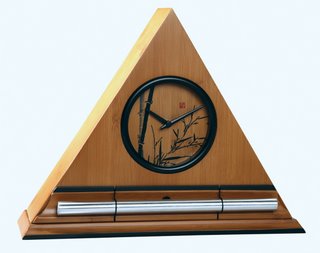 Bamboo Chime Clocks by Now & Zen Now & Zen – The Gradual Chime Clock Store
1638 Pearl St.
Boulder, CO 80302
(800) 779-6383
Posted in Chime Alarm Clocks, nature
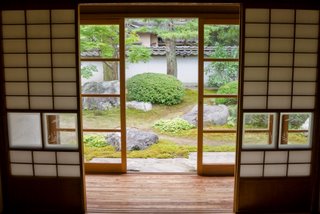 Zen Garden Calligraphy and the art of ink painting has inspired the design of our Zen Clocks.
One of our most popular dial faces features the calligraphy character for “dream” set against a rice paper or bamboo background. Japanese characters are called “kanjis” and so this dial is called the “Dream Kanji.”
Another dial face features the kanji for “Inner Peace” set against the raked sand of a Zen rock garden.
Although our “Bamboo motif” dial face has no calligraphy per se, it is inspired by the tradition of ink painting, which is a close relative of calligraphy.
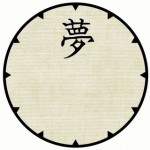 Dream Kanji Dial 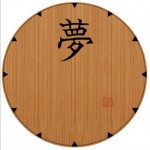 Bamboo Kanji Dial 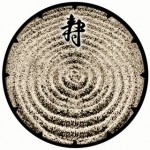 Zen Garden Dial  Bamboo Motif Dial
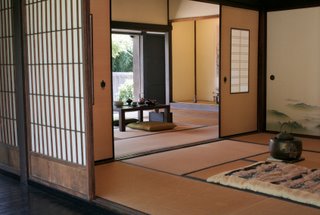 Japanese Interior Living Space Below is a description of this ancient art.
The flowing, brush-drawn Japanese language lends itself to complicated calligraphy. Calligraphic art is often too esoteric for Western audiences and therefore general exposure is very limited. However in East Asian countries, the rendering of text itself is seen as a traditional artform as well as a means of conveying written information. The written work can consist of phrases, poems, stories, or even single characters. The style and format of the writing can mimic the subject matter, even to the point of texture and stroke speed. In some cases it can take over one hundred attempts to produce the desired effect of a single character but the process of creating the work is considered as much an art as the end product itself.
 Calligraphy and the Art of Ink Painting used in Zen Alarm Clocks This art form is known as ‘Shodo’ which literally means ‘the way of writing or calligraphy’ or more commonly known as ‘Shuji’‘learning how to write characters’.
Commonly confused with Calligraphy is the art form known as ‘Sumi-e’ literally means ‘ink painting’ which is the art of painting a scene or object.
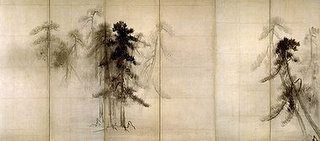 Japanese Ink Painting
Visit Now & Zen’s Showroom
1638 Pearl Street
Boulder, CO 80302
(800) 779-6383
Posted in Chime Alarm Clocks, Japanese Inspired Zen Clocks, Now & Zen Alarm Clocks, Zen Gardens
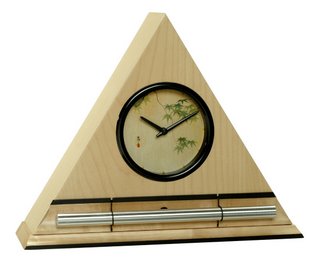 zen and the art of waking up, gentle chime clocks by Now & Zen Rise and Relax – a new concept for Alarm Clock
Incessant mechanical bleating breaks your sweet sleep, and the morning is spoiled before it has even begun! Anyone who has relied on an alarm clock to get them out of bed can relate.
Thank Buddha, for this nerve-jangling sunrise ritual can be transcended. Now & Zen, Inc. in Boulder, Colorado offers a soothing alternative with the gentle Zen Alarm Clock.
 alternative alarm clocks with chimes This line of solid maple and walnut clocks uses chimes that emulate Tibetan-bells to gently and gradually awaken users over a period of ten minutes. The tones can also be used for meditation and yoga.
To practice zen and the art of waking up, go to www.Now-Zen.com.
by Kelly Cunningham
Now & Zen – The Gradual Chime Alarm Clock Store
1638 Pearl St.
Boulder, CO 80302
(800) 779-6383
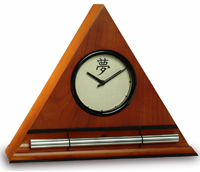 zen and the art of waking up, chime alarm clocks by Now & Zen, Inc.
Posted in Bamboo Chime Clocks, Chime Alarm Clocks, Now & Zen Alarm Clocks
« Previous Page — « Previous Entries
Next Entries » — Next Page »
|
|
|
|